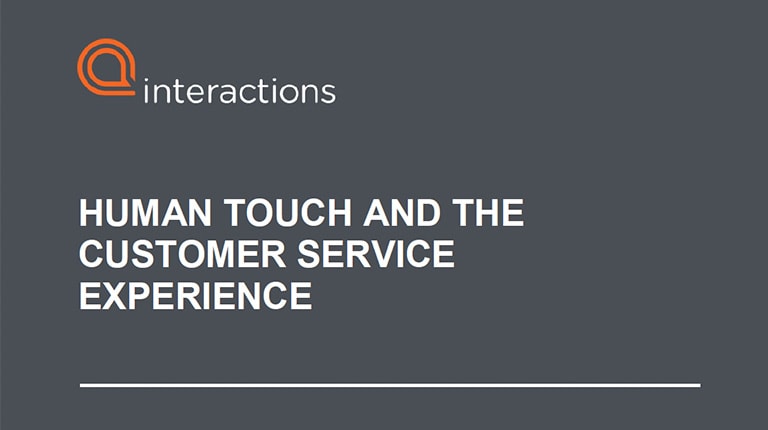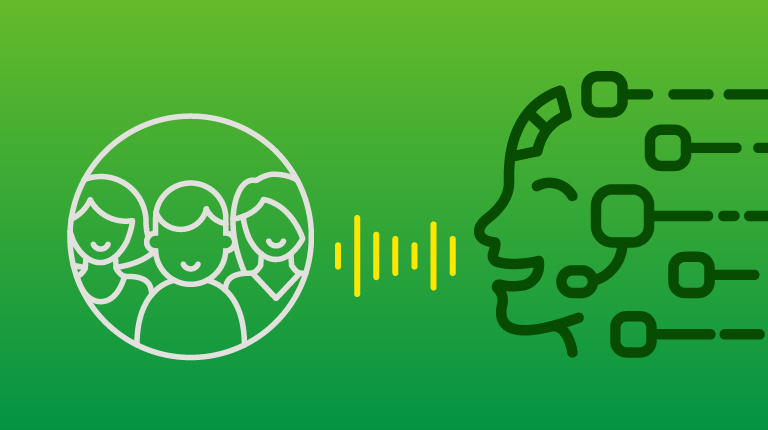Recently, I hosted a forward-thinking interactive session at Frost & Sullivan Customer Contact East titled “Automated Customer Care with a Human Touch.” Based on the findings from a recent study on consumers’ experiences with automated customer service interfaces, the session raised some interesting points about the current state of customer care. There was a lot of talk about the present – what is and is not working – but what I found most enlightening was the discussion about the future of this industry and where customer care technology is headed.
Through conversations with our group, it became clear that this was a topic that struck close to home. They were concerned about their company’s ability to deliver not just good, but memorable customer experiences, and want to find a way to impact meaningful change. The challenge is that most companies are stuck with the existing, ‘status quo’ technology that fails to meet customer service expectations. A consistent theme was the need to change.
Based on current advances in Virtual Assistant technology – as well as other care solutions – participants were hopeful that customer care has a bright future ahead of it.
I left the session feeling assured that customer care technology is headed in the right direction. Here are some of my key takeaways that point to the path we’re moving down.
Customer Trust in Automated Systems is Broken…
Many issues around current automated systems that were highlighted during the session centered on the fact that customer trust in automated systems is broken. This is largely the result of technology not being able to effectively deliver or meet customer expectations – whether those expectations deal with efficiency, problem resolution, or just overall pleasantness of the experience.
…But the Problem Can be Fixed.
Despite this lack of trust, session participants were eager to point out a solution. The two main takeaways here were: 1) the days of the endless call flow tree are dead, and 2) companies need to listen. To eliminate multiple transfers and people getting stuck in the wrong spot, companies need to rethink how customers get from question to resolution. The future of automated customer care involves a direct path of listening to what consumers need and following their lead in order to build trust.
Companies Need Some Level of Gatekeeper…
Despite notable issues with some of the most widely used automated systems, session participants agreed that some level of front door or gatekeeper is necessary. It is important to note, however, that this gatekeeper needs to be efficient and helpful – rather than hurtful – to the overall customer experience. Companies are looking for flexible solutions that improve the care experience while offering the ability to adapt and change as the relationship with consumers continues to evolve.
…But Personalization is Key to Getting the Experience Right.
Ultimately, companies realize that their customers are seeking unique, personalized experiences. Some of the most widely used customer service interfaces fall flat in this regard. For this reason, there was a fair amount of talk at the session about customer segmentation and personalization as ways to improve customers’ trust. This creates a richer, more unique experience that makes customers feel understood, instead of like they are being shepherded through an endless series of prompts only to have to repeat the same information to a live agent. In addition, Voice Biometrics was highlighted as a technology that holds potential to improve the ease of customer experience and personalization.
This session brought up a number of key issues that currently face customer care, but it also highlighted some exciting developments that are shaping the future of the industry. It is clear that companies recognize the need for improvement and are willing to take steps to embrace the necessary change that will help improve the overall customer experience.
To learn more about customer attitudes toward automated customer service interfaces, read our full report: “Human Touch and the Customer Service Experience”.





